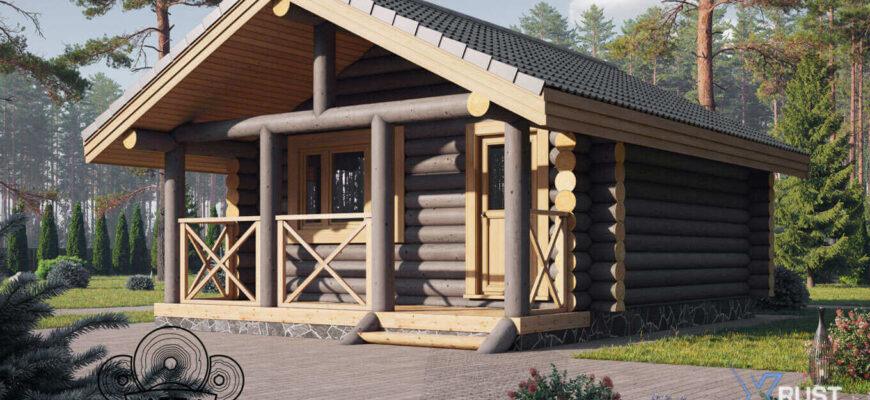Shrinkage of a log house made of timber
Shrinkage of a timber log house is an inevitable process associated with the drying of wood and the compaction of the structure under its own weight. Understanding the factors that influence shrinkage and properly organizing construction work can minimize potential negative consequences and ensure the durability of a wooden house.
Factors influencing the shrinkage of a log house:
Moisture content of the wood: Timber with natural moisture content (around 30%) can shrink by 6–8 cm for every 3 meters of wall height. Profiled timber with kiln-dried moisture content of 15–20% shrinks by 2–4 cm at the same wall height.
Construction season: Winter construction promotes a more uniform and gradual shrinkage, as moisture freezes slowly, reducing the risk of wood cracking. Summer construction may require a longer shrinkage period due to higher humidity levels.
Wood species and density: Denser wood species, such as larch, are less prone to shrinkage compared to less dense species, such as pine.
Dimensions and shape of the timber: The thickness and length of the timber affect the degree of shrinkage: the bulkier the material, the longer it takes to fully dry and stabilize in size.
Recommendations for minimizing the effects of shrinkage:
Waiting period before finishing: After completing construction, it is advisable to wait a certain period before starting finishing work. For houses made of timber with natural moisture content, this period is about a year; for kiln-dried timber, it is 5–6 months.
Using shrinkage compensators: Installing special screw jacks on vertical posts and other structural elements allows for height adjustment and compensates for changes occurring during the shrinkage process.
Applying casing (jacketing): When installing windows and doors, it is necessary to use casing boxes that prevent deformation of openings during wall shrinkage. A gap (usually 2–5 cm) is left at the top of the opening, filled with insulation that is covered with trim.
Monitoring humidity and temperature: Maintaining optimal conditions inside the log house, such as moderate temperature and good ventilation, promotes uniform drying of the wood and reduces the risk of cracking.
By considering these factors and recommendations, it is possible to significantly reduce the negative consequences of shrinkage and ensure the durability and reliability of a wooden house made of timber.
https://xrust.ru/help/310967-usadka-sruba-iz-brusa.html










